A solar system is the complete collection of solar panels, batteries, inverter, panel stand, dc wire, lighting arrester, and earthing kit. Here, you will know about compression between on-grid solar systems and off-grid solar systems. According to consumer surveys, 40% market share of on-grid solar systems, 45% market share of off-grid solar systems, and the rest of percentage market are direct or home lighting systems.
1. Definition
What is On grid solar system? An on-grid or grid-tied solar system is a system that works along with the grid. This means that any excess or deficiency of power can be fed to the grid through net metering. Many residential users are opting for an On-grid solar system as they get a chance to enjoy credit for the excess power their system produces and save on their electricity bills. You will always have power either from the solar system or from the grid. They do not have batteries. A conventional on-grid solar system will not be operational until net metering is approved by the electricity department.
What is Off Grid solar system? In contrast to an on-grid solar system that works along with the grid, while an off-grid solar system works independent of the grid. It is more popular in India and comes with a power backup.
2. Purpose / Benefits
The customer should decide between the off-grid and on-grid solutions. If he is looking for power backup in a commercial space as his main motive for installing solar, then he should go for an off-grid solar system but if his target is to reduce his monthly electricity bills, he should probably choose an on-grid solar system. So, an off grid solar power system makes more sense in places where there are frequent power outages or unavailability of grid, to power your home.
On Grid Solar System: To save electricity bill only.
Off Grid Solar System: To generate electricity as well as save electricity bill both.
3. Working
On grid solar system: The light from the sun falls on the solar panels from where electricity is generated. This DC from the sun is converted into AC with the help of the inverter, which is then used by consumers in their homes or any commercial establishment. Any excess power that is not consumed can bed to the grid. Based on the feed-in-tariff rates for the purchase of the solar power generated from the solar plant, your electricity bill is reduced for the amount of power that you have sold to the power grid. After the sun goes down, your home will automatically source its power from the frid.
Off Grid solar system: Till electricity consumption, the working of an on-grid and off-grid systems is the same. After consumption, the extra power is stored in batteries for use at a later part of the day or during night time when there is no sun.
4. Appliances that can run
On Grid Solar System: you can run any home appliance on the grid-tied solar system. These systems are the best choice for running high power consuming appliances for long hours.
Off Grid Solar System: you can run any home appliance like refrigerators, air conditioners, electric heaters, etc. on an off grid solar system. However, you can only power limited number of appliances for a limited number of hours depending upon the storage in the battery, else the cost of power storage will be very high.
5. Installation Process
On Grid Solar System: Installation of an on-grid system is easy and can be done easily by oneself on the rooftop. It can be easily installed on residential rooftops, rooftops of commercial complexes, housing societies, community centres, government organizations, private institutions, etc. Installation involves installation of a custom solar panel stand, fitting panels on it, junction box, lightning arrestor, inverter, copper wires, etc.
Off Grid Solar System: In the installation of an off grid solar system, you also have to connect and install the batteries. Installation involves installation of a custom solar panel stand, fitting panels on it, junction box, lightning arrestor, inverter, batteries, etc.
6. Investment vs. Return
On Grid Solar System & Off Grid Solar System both: The main purpose of installing an on-grid solar system is to reduce your electricity bills. Also, an on-grid solar system offers a good investment option. It has 5 years as payback time and provides free electricity for the next two decades. You can convert your own property into a revenue-generating avenue by investing in solar and achieving ROI in just 4-5 years.
7. Solar Finance
On Grid Solar System: Since an on-grid solar system does not require batteries, it is cheaper to install when compared to an off-grid system. It is less costly when compared to other solar systems. An on-grid solar system involves less maintenance and generally has a longer life when compared to an off-grid system. A user can avail of government subsidies and other incentives to install on-grid solar systems. A typical on-grid system will cost Rs. 80,000 per Kilowatt.
Off Grid Solar System: A typical off-grid system will cost Rs. 95,000 per Kilowatt. These systems are costlier than on-grid systems because of battery storage.
8. Components
On Grid Solar System: Solar panels, inverter, panel stand, solar wire, DCDB/ ACDB, earthing kit, lightning arrestor, net meter, safety equipment, accessories.
Off Grid Solar System: Battery storage and charge controllers are extra components needed in an off-grid system. Batteries store the excess energy generated by the panels which can be used later when the sun goes down and charge controller limits the flow of current to the battery and prevents the batteries from overcharging.
Conclusion
Loom Solar is a leading solar company for the rooftop solar sector which helps those homeowners who build energy-efficient homes and deals with both on-grid and off-grid solar solutions. The company is working towards making homeowners across India including villages aware of solar energy. You can contact solar experts/ professionals and allow them to guide you through the ever-changing maze of renewable technology. Loom Solar helps 1 million solar buyers every month.






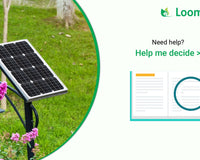
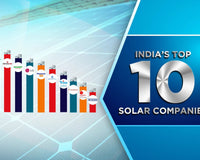
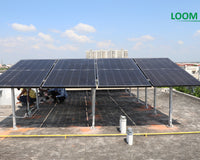
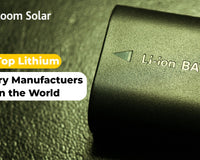
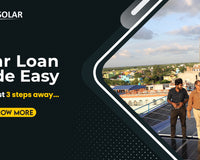


1 comment
Eninrac Consultancy
The choice between an off-grid or on-grid solar power system depends on factors such as your location, energy needs, budget, and reliability of the grid. Off-grid systems offer independence and self-sufficiency but require larger upfront investments and maintenance, while on-grid systems provide convenience and potential financial benefits through net metering. Consider your specific circumstances and consult with experts to determine the best option for your energy goals.
Visit Our Market Research Comapny